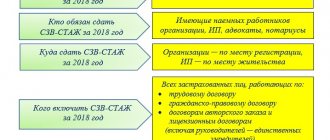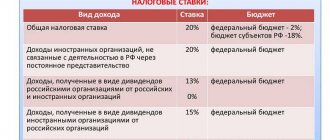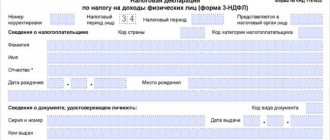The Federal Tax Service deciphered the error codes and explained how to proceed when receiving a Request
The tax authority may send a request to the taxpayer if it discovers contradictions and inconsistencies between the information about transactions contained in the VAT return, information about these transactions submitted to the tax authority by another taxpayer, or in the journal of received and issued invoices. The appendix to the tax authority's request (for reference) indicates a possible error code. There are 4 error codes in total. For each operation, only one of four error codes can be indicated, namely:
— error code “1” is indicated if the transaction record is missing in the counterparty’s declaration, or the counterparty did not submit a VAT return for the same reporting period, or the counterparty submitted a declaration with zero indicators, or errors made do not allow identifying the invoice record and, accordingly, compare it with the counterparty;
— error code “2” is indicated if the transaction data between section 8 “Information from the purchase book” (Appendix 1 to section 8 “Information from additional sheets of the purchase book”) and section 9 “Information from the sales book” ( Appendix 1 to Section 9 “Information from additional sheets of the sales book”) of the taxpayer’s declaration (for example, when deducting the amount of VAT on previously calculated advance invoices);
- if code “3” is specified, the data on the transaction between section 10 “Information from the journal for recording issued invoices” and section 11 “Information from the journal for recording invoices received” do not correspond to the taxpayer’s declaration (for example, reflection of intermediary transactions);
— error code “4” means that there may be an error in some column. In this case, the number of the column with a possible error is indicated in brackets.
After receiving a request from the tax authority in electronic form via telecommunication channels through an electronic document management operator, the taxpayer must:
1. Submit to the tax authority a receipt of acceptance of the Requirement in electronic form via telecommunication channels through an electronic document management operator within six days from the date of its sending by the tax authority;
2. With regard to the entries specified in the Request, check the correctness of filling out the tax return, check the entry reflected in the tax return with the invoice, pay attention to the correctness of filling in the details of the entries for which discrepancies have been established: dates, numbers, amounts, correctness of calculation of the amount VAT depending on the tax rate and the cost of purchases (sales). If an invoice was accepted for deduction in parts (several times), it is also necessary to check the total amount of VAT accepted for deduction for all entries in such an invoice, including taking into account previous tax periods;
3. Submit to the tax authority an updated tax return with correct information if an error is identified in the submitted VAT return that leads to an understatement of the amount of tax payable;
4. If an error in the declaration did not affect the VAT amount, provide an explanation indicating the correct data. It is also recommended to submit an amended tax return. Explanations can be presented in free form on paper or in formalized form via telecommunication channels through an electronic document management operator. To send explanations in a formalized form, it is necessary to clarify the availability of such an opportunity with the developer (supplier) of the taxpayer’s accounting system or the electronic document management operator;
5. If, after checking the correctness of filling out the declaration, no errors are identified, the tax authority must be notified about this by providing explanations. These clarifications are provided by the Federal Tax Service of Russia for the Oryol Region (conveyed by letter of the Federal Tax Service of Russia dated November 6, 2015 No. ED-4-15/ [email protected] ).
reporting tax reporting
Send
Stammer
Tweet
Share
Share
Possible error code 1
Your supplier's reporting does not contain any similar invoice data. This may cause deductions to be taken away. Since the supplier did not reflect an identical invoice, he did not pay the tax. In this case, it is not necessary to submit adjustment reports. It is enough to contact the supplier for clarification. He could simply have made a mistake in the details, which is why the program did not detect the document. If he forgot to report on this implementation, then he should submit a clarification. If the reality of the transaction is documented, the withdrawal of deductions will be unlawful on the part of the tax authority.
Code 000000001 means that errors were made in the declaration or calculation and require clarification, not explanation.
General recommendations to follow
It is clear that each error code specified in the response request is corrected individually. However, there are a number of general recommendations that should be followed:
- After receiving the request from the tax authorities, you must send a special receipt through the EDF operator to the tax office within six days. This is done electronically. If this is not done, then the tax authorities can wait another ten days, after which they can stop any transactions at all on the accounts of the legal entity;
- Carefully double-check all the information provided - amounts, dates, totals, correctness of calculations, numbers, and so on. Very often, simple inattention leads to the fact that the tax authority returns a previously sent declaration with demands to correct certain errors;
- If the problem is a clear underestimation of the amount of tax payments, then you should promptly adjust the report so that the tax amount becomes correct;
- If there is an error, but the final amount itself is correct, then you need to send an explanation to the tax authorities, where the updated information will be indicated.
Another important point is that explanations are sent only electronically; they will not even be considered in writing. The problem must be resolved within five days after the requirements were received. Sending is carried out through an EDF operator, necessarily in the format specified by order of the Russian Federal Tax Service dated December 16, 2016 No. ММВ-7-15 / [email protected]
Why is the declaration not accepted?
The taxpayer becomes aware of shortcomings in the preparation of the report almost immediately. For example, if an arithmetic error is made, a special verification program will indicate the inconsistency. Typos in the format will also lead to refusal to accept reports.
Refusal to accept VAT reporting occurs not only due to errors in the reporting form itself. Tax officials also consider discrepancies in data between counterparties to be an error. For example, when your company claims a deduction, reflecting acquisitions in the purchase book, and the counterparty for some reason does not include this sale in its sales book.
If discrepancies are identified in the calculation, the Federal Tax Service will send a request for clarification to the taxpayer. The code of the defect in the request will allow you to quickly determine the essence of the blot in the declaration report. For example, back in 2021, only 4 VAT reporting codes were in effect. But since the beginning of 2020, officials have introduced an additional five. Now there are 9 codifiers, each characterizing a specific type of defect.
Possible error code 3
There is a discrepancy in sections 10 and 11, intended to be filled out by intermediaries with information from the invoice journal.
Inconsistencies arise if, after selling products on its own behalf, the intermediary company issued an invoice to the buyer, and when checked by the tax service, the program detected inconsistencies. However, errors in the journal cannot affect the basis for calculating tax, so the company can exercise the right not to submit updated reporting. But, due to such errors, inspectors sometimes refuse deductions for the buyer, so explanations along with a table with the correct information still need to be provided in order for the inspector to enter this into his database.
Reviews
Feedback from our visitors allows us to understand how they cope with this situation:
- Igor. I asked to fill out a trainee accountant’s declaration this year. And somehow I didn’t check it. I forgot that an inexperienced employee needs an eye and an eye. In the end, he paid. They sent a request with error code 4 20.21. Marked with a one. I looked at the report, and indeed there were gaps in some lines, although the operations were carried out. Scolded the accountant. But it’s also his own fault. Corrected it and sent it. Looks like they accepted it.
- Novel. I always have problems with my attentiveness. The prize in filling out the declaration was wrong by one digit in the eighth section. As a result, they sent a response demanding that it be brought into line with the ninth. I looked and the amounts really don’t match. I recalculated and found my typo.
- Tatiana. The undoubted advantage of this whole situation is that they send error codes in response, which make it easier to find your mistake. There is no need to go through the entire declaration, wondering what I entered incorrectly. You can focus on specific sections. Therefore, five days is enough to find the violation and correct it.
- Semyon. They returned it with the eighth code. I had to re-read order No. ММВ-7-3 / [email protected] , but it helped. About an hour later I discovered the wrong code that I indicated in the report. Fixed it, sort of. But just in case, I double-checked the entire report so that it wouldn’t be rejected again.
- Vladimir. Thanks for the information on the codes. The fact is that this is the first time I will be sending such documents to the tax office. Before this there was no need. And now I’ve opened my own business and the need has arisen. I have carefully studied all the information and am preparing a declaration based on it.
- Fedor. I only had one time when the submitted statements were returned. Indicating the fourth code. Plus – that the specific column is indicated in brackets. I immediately found it and entered the required data.
- Ilya. I came across the ninth code of this error. The reason turned out to be a simple mathematical mistake. Incorrectly calculated the totals. And I received incorrect data. I recounted it several more times until I was sure it was in full compliance.
- Natalia. When filling out documents at the Tax Office, I always duplicate the work. That is, I fill out the draft and count everything myself. Plus I’m connecting two experienced accountants. Then we compare the results. If we find any difference, we look for its cause. Therefore, I have never had my declaration returned to me with error code 4 20.21.
That is, to avoid such a situation, in most cases you just need to be careful. It’s better to spend a few extra hours at the very beginning to double-check everything, than to frantically search for the reason for the return of the document from the Federal Tax Service.
Possible error code 4 [a, b]
Inconsistencies between the details in the invoices of the buyer and supplier. In square brackets, the inspector will reflect the numbers of the columns where incorrect details are entered. It is important to understand that these are columns of invoices or purchase books, namely columns in the tax program table. For example, the Federal Tax Service sent a request with a table for section 8, error code - 4 [19]. This means that the parties to the transaction do not have the same VAT amounts and, possibly, deductions are inflated.
If you do not find an error, please provide an explanation and attach a copy of the invoice. Errors in the TIN/KPP, invoice number or date also mean that there is no need to clarify. Fill out only the table from letter No. AS-4-2/12705 with the correct data so that the tax authorities correct inaccuracies in their database.
Only an underestimated tax means that in response to the requirements it is necessary to submit an amended declaration, and before that pay additional VAT with penalties.
Possible error code 2
The information inside the declaration contradicts each other. For example, in section 3 and in sections 8 and 9. This also means that the inspectors carried out a detailed reconciliation of the control ratios. This can be done independently before submitting the reports, which will be quite advisable in order to avoid discrepancies and problems with the tax authorities. Error code 2 is possible if the organization erroneously submitted section 2, intended for tax agents, but the program did not detect transactions under code 06 in section 9. This means that the accountant made a mistake.
In this case, an updated declaration is not submitted, since the tax payable is not underestimated, but explanations are provided.
Sometimes errors can occur due to differences in the rules for filling out the form. For example, in section 3 it is necessary to reflect the amounts of deductions and charges in full rubles, and in sections 8 and 9 - in kopecks. There is no need to prepare adjusting statements for such discrepancies; it is enough just to explain that the discrepancies arose due to rounding.
How to find out about errors in the declaration
The main requirement of the tax inspectorate is to connect all legal entities and entrepreneurs to electronic communication channels. Through them, all kinds of messages are received from the tax inspectorate, and if any errors are detected in the reports, they can send requests for clarification, as well as demands for payment of penalties and fines.
Important! When sending a declaration, you may not even suspect that there is an error or inaccuracy in it, since it may not be only your fault.
This is possible when the counterparty with whom you collaborated and issued the invoice did not reflect it in its sales book. Because of this, you will have to give explanations to the regulatory authority and prove the legality of the transaction, otherwise you may not be credited with this VAT deduction. Let's ask ourselves, how can you find out that the client did not accept your invoice? The tax office is not asleep and will send requests for clarification with the specified error code. There are only four such codes.









